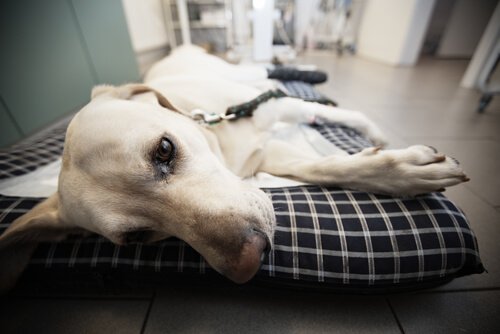How to Prevent and Treat Leishmaniasis in Dogs

This parasite can cause your pet some serious problems and even death if not treated in time. That is why in today’s article we are going to talk about leishmaniasis in dogs and give you some advice to prevent it or treaty this disease.
Depending on the area where the dog lives, it will be more or less likely that they may contract this disease. Certainly, in tropical places where there is a lot of moisture and heat, the dog will be more exposed to this mosquito.
However, regardless of the area, if the dog lives in a garden, terrace, or outside, the risk of contagion is greater.
Symptoms of leishmaniasis in dogs
In order to know how to fight leishmaniasis in dogs, it’s important to know what symptoms your pet would have.
Of course, not to mention, if you notice any or some of these symptoms in your dog, you should go to the vet quickly.

Below are the symptoms of leishmaniasis in dogs:
- Ulcers on the edges of the ears, head or extremities
- Inflammation of the eyes
- Abnormal nail growth
- Loss of hair on the head
- Wounds that don’t heal
- Urine with blood
- Diarrhea
- Conjunctivitis
- Dermatitis
- Muscular atrophy especially on the face, which creates a sad and aged expression
- Exhaustion
- Joint inflammation or lameness
- Swollen lymph nodes
- Weakness
- Weight loss
- Fever
- Nosebleeds
- Swollen abdomen
What should you do if you take your dog to the veterinarian to get them tested for leishmaniasis and they result positive? If it’s not advanced, the dog can lead a normal life, but they will require periodic check-ups and take medication for the rest of their life.
Certainly, leishmaniasis is not an issue to be taken lightly. Therefore, prevention would be the best method of attack.
How to prevent leishmaniasis in dogs
There is a vaccine that’s recommended especially for dogs that live in tropical areas or outside. It should be administered in puppies after they are 6 months old. First, it will be administered 3 times the first year of vaccination. Then, they will receive an annual booster for the rest of their life.
Maybe this seems like a lot, but it is great for prevention, considering that leishmaniasis can be deadly. Also, other simple things that you can do are:
- Put a flea-collar on them.
- Fumigate around the house, especially in an area that’s known that for having sandflies.
- Put external insect repellents on the animal’s fur from time to time.
- If the dog lives inside the house, plug in electrical insecticide dispensers, which are very effective.
- Don’t take the dog to areas where the water is stagnant and dirty.
- Put up mosquito nets at home.
- If you can, allow your pet to sleep in the house, because during the night is when mosquitoes are out the most.
What if your dog already has leishmaniasis? Is there a solution?
How to treat leishmaniasis in dogs
The veterinarian can provide you with a treatment that will help your dog lead a normal life. It will never disappear completely, unless the disease is at a mild. However, it can extend your pet’s life for a long time. Of course, the treatment is expensive and doesn’t guarantee that the animal will not relapse.

However, the after-effects of this disease can be lethal. Therefore, getting your dog the right treatment in time is vital to save their life.
Don’t forget to take your dog to the veterinarian so that they can determine the severity of your pet’s leishmaniasis. That way, they can apply the best treatment as soon as possible.
And if you have not done it yet, vaccinate your dog just as the saying goes: “Prevention is better than cure”.
All cited sources were thoroughly reviewed by our team to ensure their quality, reliability, currency, and validity. The bibliography of this article was considered reliable and of academic or scientific accuracy.
Alvar, J., Cañavate, C., Molina, R., Moreno, J., & Nieto, J. (2004). Canine leishmaniasis. Advances in Parasitology. https://doi.org/10.1016/S0065-308X(04)57001-X
Palatnik-de-Sousa, C. B. (2012). Vaccines for canine leishmaniasis. Frontiers in Immunology. https://doi.org/10.3389/fimmu.2012.00069